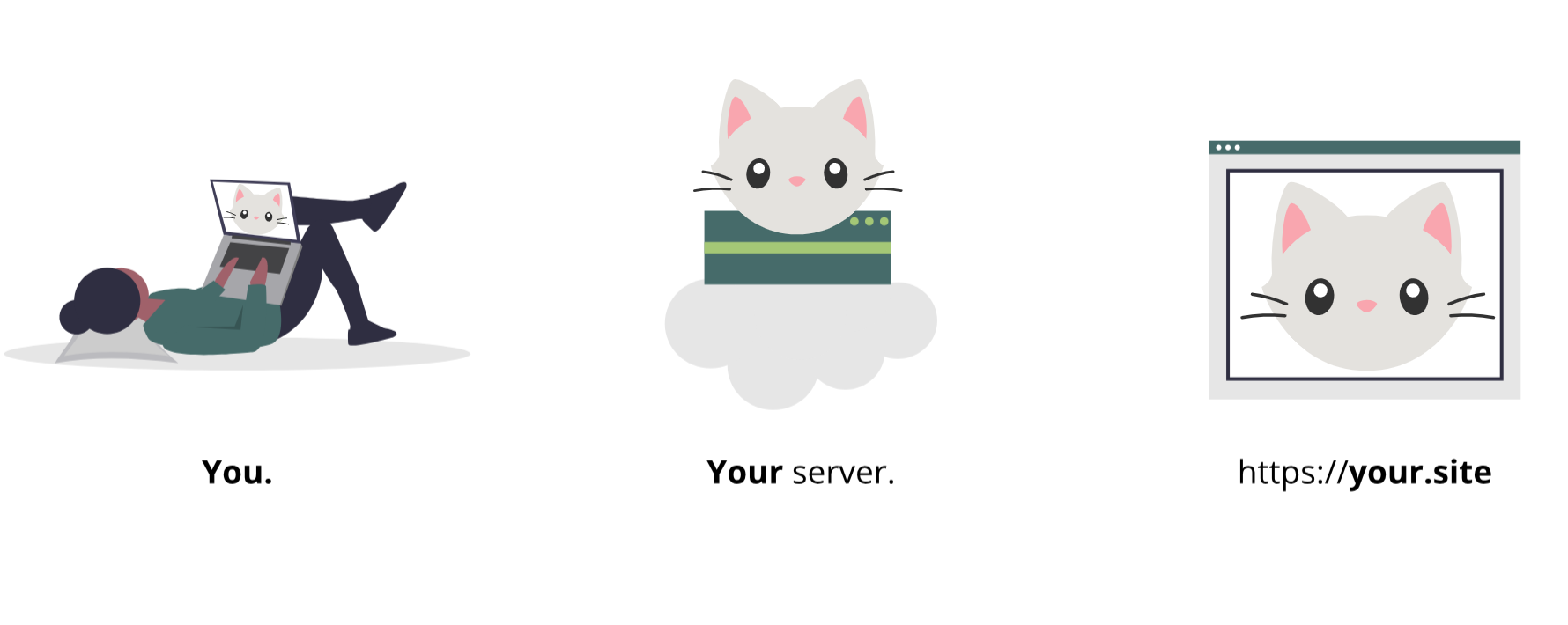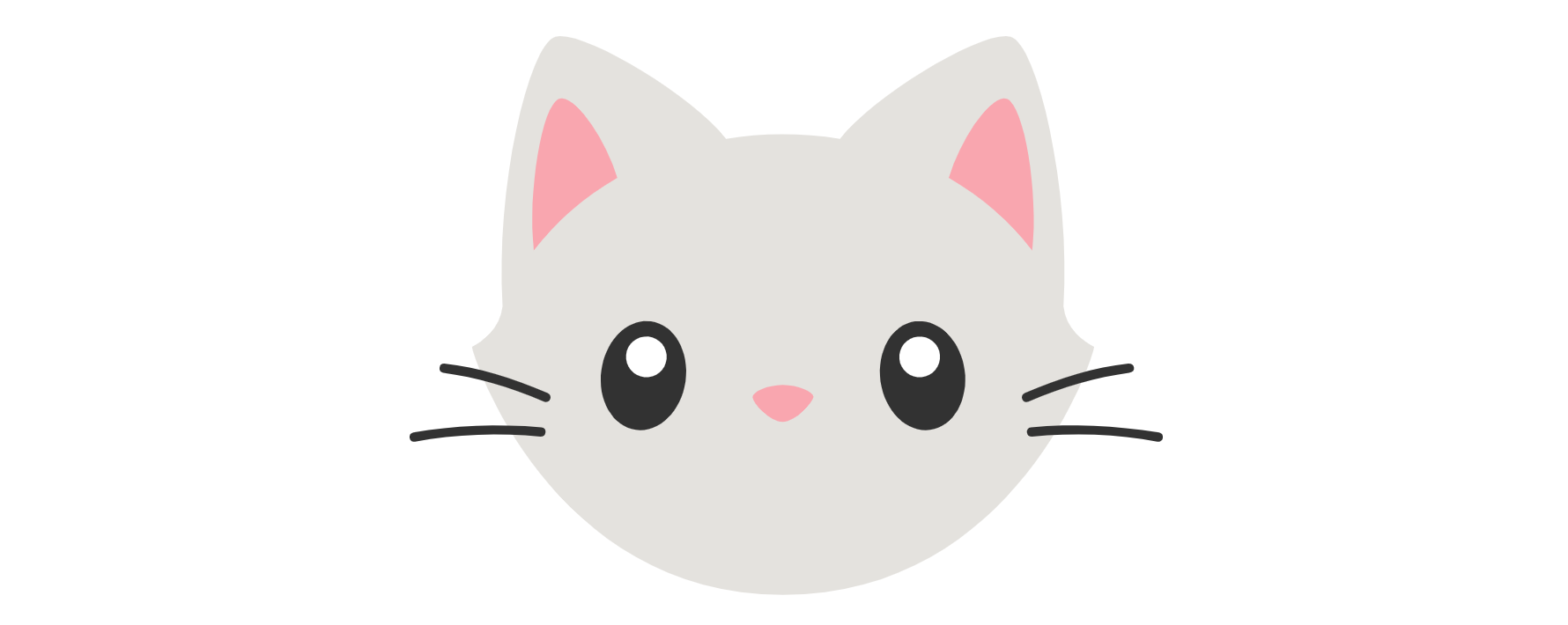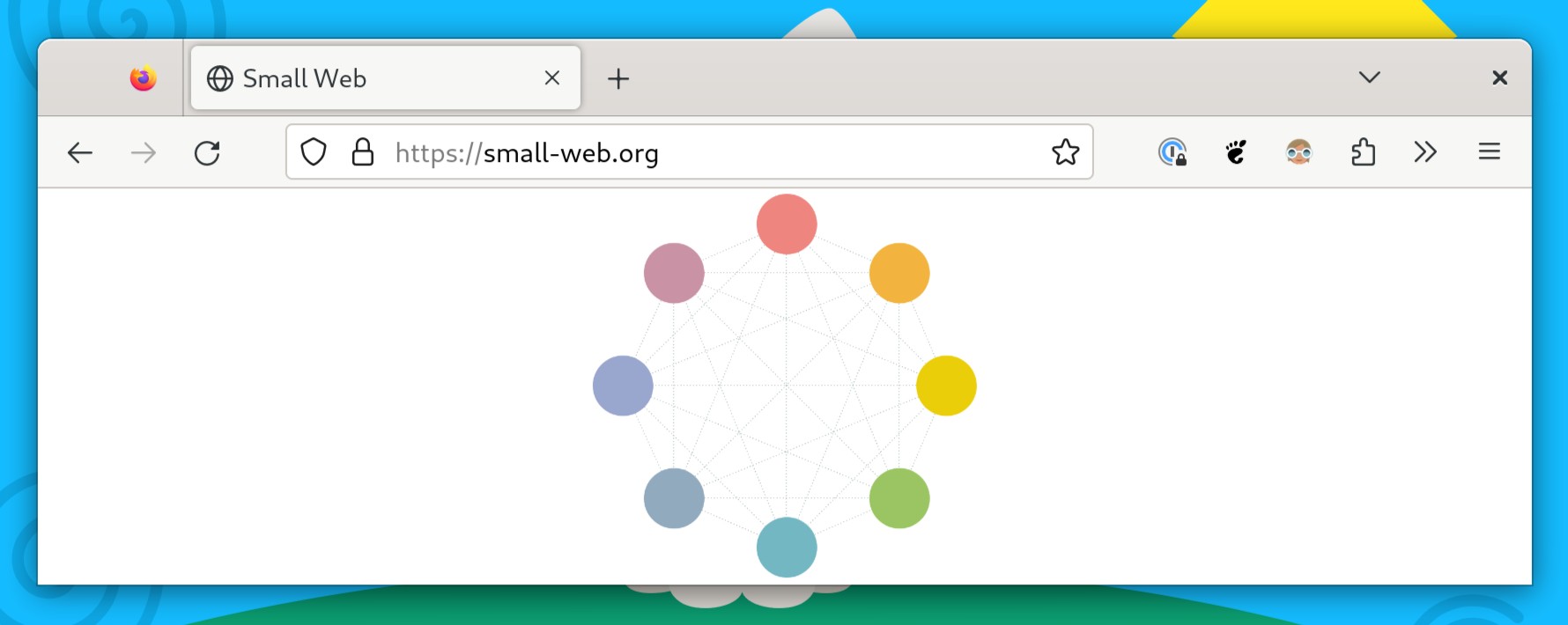What is the Small Web?
Updated June 19th, 2023
Today, I want to introduce you to a concept – and a vision for the future of our species in the digital and networked age – that I’ve spoken about for a while but never specifically written about:
The Small Web.
To understand what the Small Web is, let’s compare it to the Big Web. In other words, to the centralised Web we have today.
The Big Web

You are allowed to rent space on Megacorp’s servers in exchange for giving up your privacy, freedom of speech, and other human rights.
The Big Web is the centralised web; it is a web in the sense of a spider’s web. The spiders that sit at its centre waiting to suck you dry are Big Tech people farmers like Facebook, Google, etc.
The Big Web has “users” – a term Silicon Valley has borrowed from drug dealers to describe the people they addict to their services and exploit. We farm users in server farms. On the Big Web, we can fit thousands of users into a single server and Megacorps “scale” to run thousands upon thousands of servers in their farms.
On the Big Web, you never own your own home. You must rent your home from Megacorps. Most often, you don’t have to pay for your home using money. You pay for it by forfeiting your privacy, freedom of speech, and your other human rights. Collectively, we pay for it by forfeiting a democratic future.1
The mass surveillance and factory farming of human beings on a global scale is the business model of people farmers like Facebook and Google. It is the primary driver of the socioeconomic system we call surveillance capitalism.
The Small Web

On the Small Web, you own your own home.
The Small Web, quite simply, is the polar opposite of the Big Web. It applies the Small Technology principles to the web.
The Small Web is Your Web
The Small Web is for people (not startups, enterprises, or governments). It is also made by people and small, independent organisations (not startups, enterprises, or governments2).
On the Small Web, you (and only you) own and control your own home (or homes).
The Small Web is the Single Tenant Web
Small Web applications and sites are single tenant. That means that one server hosts one application that serves just one person: you. On the Small Web, we do not have the concept of “users”. When we refer to people, we call them people.
Another fundamental difference between the Big Web and Small Web is that on the Big Web we trust servers and distrust clients whereas on the Small Web, we distrust servers and trust clients. We treat servers as dumb delivery mechanisms. The client – under the control of the person who owns the site or app – is the only trusted environment.
Our greatest usability challenge on the Small Web is making the ownership and control of your own web site or application as seamless as possible. It must be done in a manner that does not require any technical know-how whatsoever. Our goal is to make owning and maintaining your own home on the web as easy as renting from a Megacorp without all of the toxic ramifications the latter entails.
We are not there yet but the end (beginning?) is in sight.
Where we are today

Kitten is a complete Small Web development kit (including server).
The first step to building the Small Web is to build tools for developers to empower them to build the Small Web.
That’s why we’re building Kitten at Small Technology Foundation.
Currently, all our developer tools and technical infrastructure comes from Big Tech and the Big Web. They are optimised for creating Big Tech and the Big Web. While we can repurpose some of them for our own uses, we also need tools specifically optimised for building single-tenant web applications and the Small Web.

We’re currently building the tools developers (including us) need to build the everyday tools everyone will use.
In the words of Audre Lorde:
The master’s tools will never dismantle the master’s house.
(In other words, Big Tech’s tools will never dismantle Big Tech’s house. The best thing we can do as developers is to build our own tools so we can build our own houses in our own way.)
Single tenancy affords us a great reduction in complexity that we must take full advantage of if we are to make the Small Web experience as good as (if not better) than the Big Web experience.
The single tenant web is sustainable and scales differently. It does not have economies of scale. It does not scale vertically like the Big Web. It scales horizontally. As the Small Web scales, no single organisation or person scales alongside it. It does not centralise wealth and power.
Where we are heading

The Small Web is not a place; it is a public sphere. It’s the interconnections of individually-owned and controlled sovereign spaces on a global digital network.
Now that Kitten is reaching a level of maturity, we are using it to build a tool called Domain for hosting Small Web sites and applications built with Kitten with the aim of making it as easy to have your own Small Web site at your own domain3 as it is to sign up for a centralised social media platform.
We will be hosting our own instance of Domain at small-web.org. The domain has already been included in the Public Suffix List.
This work has begun and is in the early stages.
This service, once ready, will still initially be aimed at developers. However, with the infrastucture for instantly deploying any Small Web app or web site created, we (and other developers) can then turn our attention to creating beautiful, useful, and perhaps even delightful everyday things for everyday people on the Small Web that adhere to Small Tech principles.
All our work is free and open source (released under AGPL version 3.0) and we invite and encourage others to build similar services and to cooperate with us in igniting the spark of the Small Web.
Our vision for the future
You hear a lot of talk about blockchains and proof of work but this is not what the Small Web is about. Having a billion copies of the same database is not decentralisation. That’s centralisation. If you have a billion people, having a billion – two billion, three billion… – unique databases is decentralisation. In other words, decentralisation without topological decentralisation is bullshit.

When we say the Small Web is decentralised, we are talking about topological decentralisation.
(And in case talk of databases sounds dry, technical, and irrelevant to you, remember that each one of those databases is an artefact of a soul’s exploration of itself and the world around them.)
Our vision for the future is one where every person owns and controls their own place on our shared global network. This is the only way to ensure that we have a public sphere4, human rights, and democracy in the digital network era.
Like this? Fund us!
Small Technology Foundation is a tiny, independent not-for-profit.
We exist in part thanks to patronage by people like you. If you share our vision and want to support our work, please become a patron or donate to us today and help us continue to exist.
-
Of course, you can rent on the Big Web and from Big Tech by paying both with money and the forfeiture of your human rights. As surveillance capitalists grow in power, they can demand both forms of payment for access to their services. ↩︎
-
The Small Web can (and should) be funded from our common purse (our taxes) but the organisations building it must be independent of governments. Since that’s not going to happen from day one, we are doing our best to build a bridge from here to there within the limits of the capitalist system we find ourselves in. Our goal is to prove its feasibility and then ask entities like the European Union to support it in the interests of their citizens and the common good. ↩︎
-
If you want a commercial domain instead of a domain at the public small-web.org suffix, you will be able to register any domain and point it at your server. It is your server, after all. ↩︎
-
On a digital network, public space is not a place (like Facebook), it is the interconnection of sovereign spaces owned and controlled by individuals. Furthermore, I use ownership not in the capitalist sense of the word but in the very specific sense of “not owned by anyone else.” ↩︎